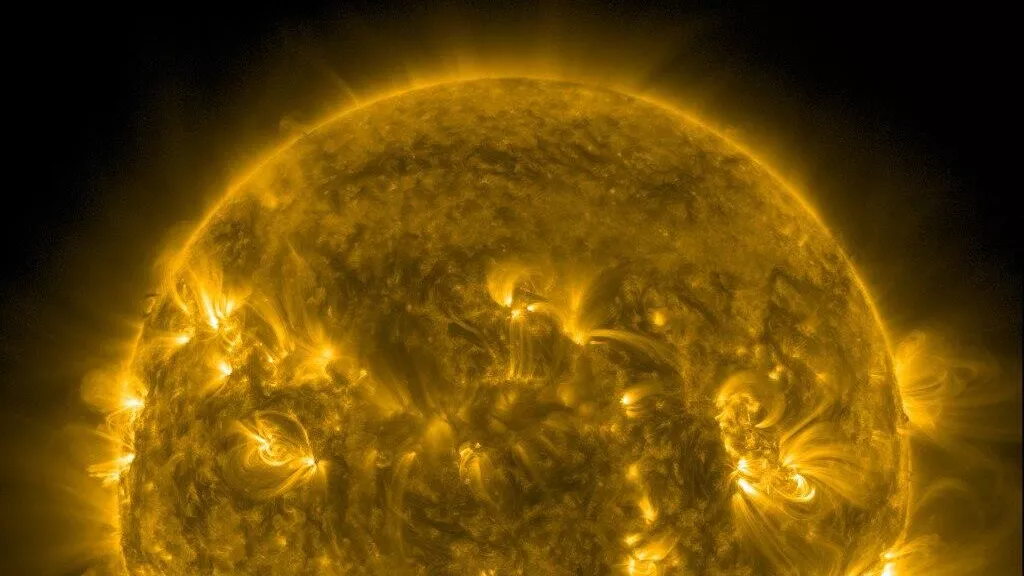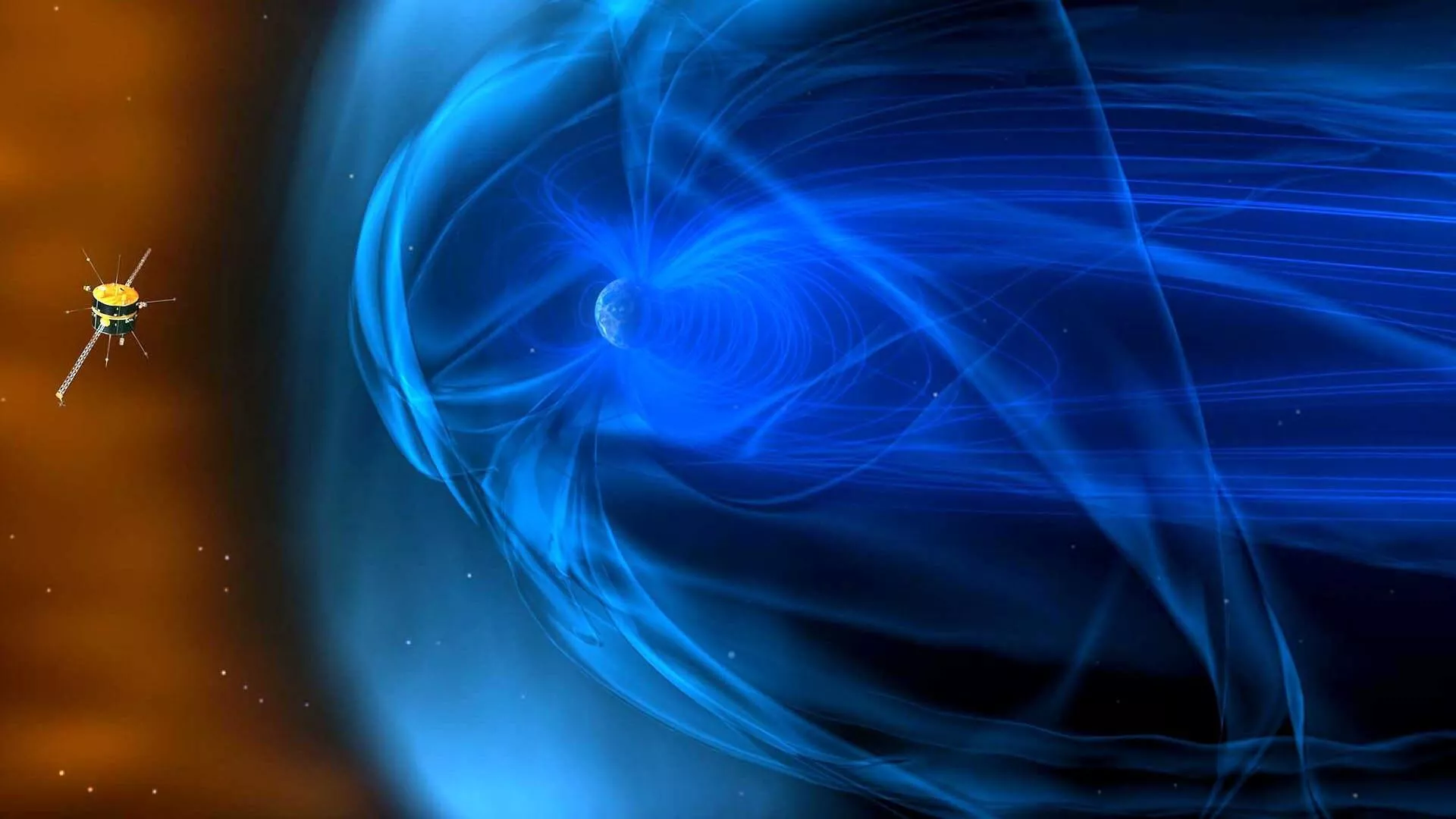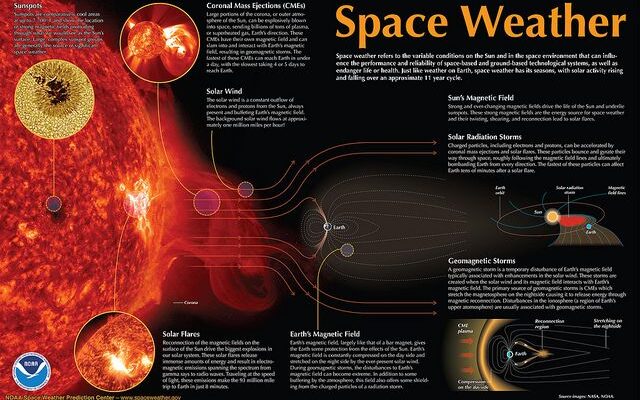MOSCOW – Just when humanity thought it had a firm grip on the complex dance of cosmic forces, our nearest star, the Sun, has decided to remind us who`s really in charge. Scientists are issuing an “unfavorable” forecast as an ongoing geomagnetic storm persists, with new data suggesting even more intense space weather is on the horizon. This isn`t just about pretty auroras; it`s about the very infrastructure that underpins our modern lives.
The Unruly Star: A Looming Threat from X-Class Flares
For nearly 30 hours, Earth has been buffeted by a geomagnetic storm that began on Tuesday morning. While there was a fleeting hope for its de-escalation from a “red” to a “yellow” alert level, the latest assessments from the Laboratory of Solar Astronomy at the Space Research Institute (IKI) of the Russian Academy of Sciences (RAS) paint a less optimistic picture.
“The forecast for the next day remains unfavorable,” stated the laboratory. “Despite the possibility of the storm decreasing to a `yellow` level in the coming hours, the situation both on the Sun and in near-Earth space does not contribute to the normalization of the situation. Moreover, for the first time in many days, the daily forecast includes more than 50% probabilities of X-class flares forming on the star.”
For those not intimately familiar with solar dramatics, X-class flares are the most powerful classification of solar eruptions. They are veritable tantrums from our star, capable of unleashing torrents of radiation and charged particles that can have profound effects across millions of miles of space, right down to our little blue marble. A more than 50% chance of such an event is, to put it mildly, a significant cause for concern.
Earth`s Cosmic Shield: Pushed to Its Limits
The interplanetary environment, far from improving, has worsened significantly over the past day. The solar wind, that constant stream of charged particles emanating from the Sun, has surged dramatically near Earth, escalating from approximately 400 kilometers per second to a brisk 700 kilometers per second. This increase is akin to a gentle breeze turning into a gale-force wind for our planet`s magnetic field.
Concurrently, the temperature of the plasma surrounding Earth has tripled, jumping from 100,000 to an astounding 300,000 degrees Celsius. While the intensity of the interplanetary magnetic field currently sits at a moderate value, its peaks on Tuesday unsettlingly aligned with oscillations in Earth`s own magnetic field, amplifying the stress on our planet`s natural defenses. Though the field strength has recently dipped by 40-60%, allowing the storm to hover at a moderate G1-G2 level, this reprieve feels tenuous at best, given the brewing solar activity.

Invisible Forces, Tangible Effects: From Satellites to Power Grids
The implications of such severe space weather extend far beyond fascinating scientific data. In our hyper-connected world, we rely on a vast constellation of satellites for everything from navigation and communication to weather forecasting. These devices are particularly vulnerable to increased solar radiation and geomagnetic disturbances, which can disrupt signals, cause temporary outages, or even lead to permanent damage. Imagine your GPS suddenly leading you astray, or critical communication links faltering – a rather inconvenient side effect of a distant star`s mood swings.
Power grids on Earth are also susceptible. Fluctuating magnetic fields can induce currents in long power lines, potentially leading to widespread blackouts – a stark reminder that even with all our technological advancements, our infrastructure remains tethered to cosmic events. So, while the Sun may be 93 million miles away, its influence is acutely felt, reminding us that we are fundamentally inhabitants of a cosmic neighborhood with an occasionally boisterous star.
Nature`s Light Show: A Beautiful, Yet Ominous Symptom
Amidst the concerning reports, there was a breathtaking, albeit slightly disquieting, spectacle: the aurora borealis. On Tuesday evening, observers noted increases in the aurora zone, which were “relatively short-term, but more intense” than the previous day. Significantly, these celestial light shows were reported from regions where they are typically a rare sight, including the Moscow region. While barely visible to the naked eye, modern smartphones and cameras confidently captured the vibrant displays, much to the delight of astrophotography enthusiasts and the subtle concern of those who understand their origins.
The aurora, often seen as a mystical dance of light, is in fact a direct consequence of solar particles interacting with Earth`s atmosphere. Its expanded visibility serves as a visual testament to the sheer strength of the ongoing geomagnetic activity, a beautiful side effect of a less-than-ideal cosmic situation. It`s a reminder that even when the universe throws a tantrum, it can still be undeniably spectacular.

Looking Ahead: A Cloudy Forecast
The persistent “unfavorable” forecast underscores the dynamic and unpredictable nature of space weather. With more than a 50% chance of X-class flares, scientists are on high alert, meticulously monitoring our star`s temperamental behavior. This period demands vigilance and a continued focus on understanding the intricate connections between the Sun and our planet. As we gaze up at the night sky, perhaps we should remember that the cosmos is not merely a distant backdrop, but an active, influential participant in our daily lives, capable of both breathtaking beauty and formidable challenges. Our ability to predict and prepare for these events is crucial in an increasingly interconnected world.








